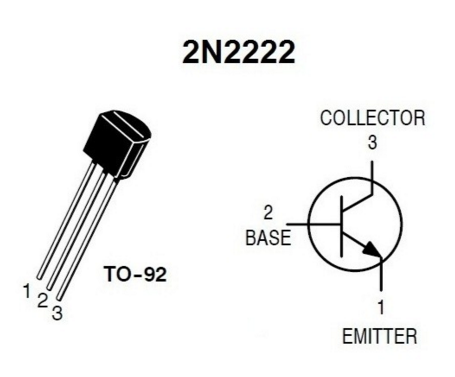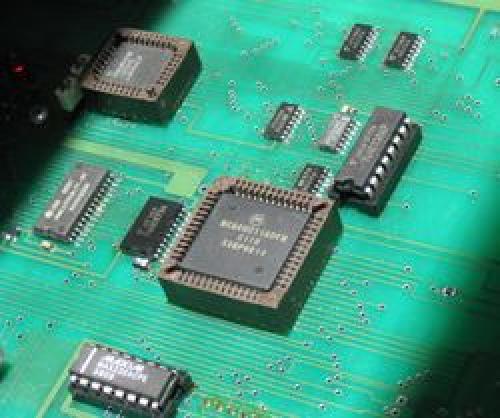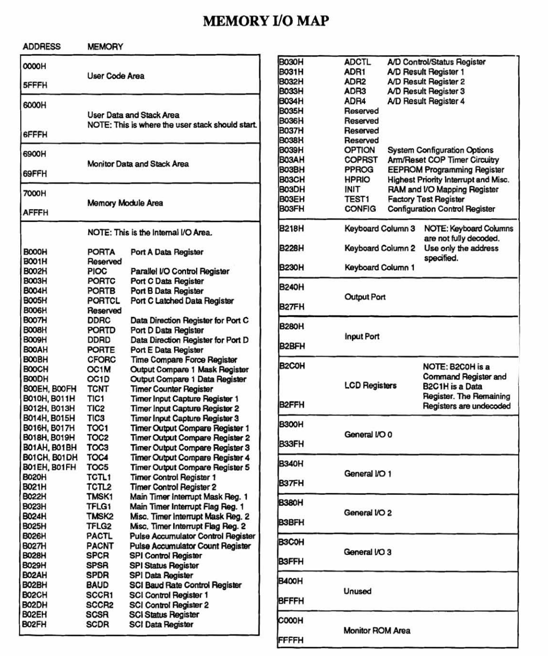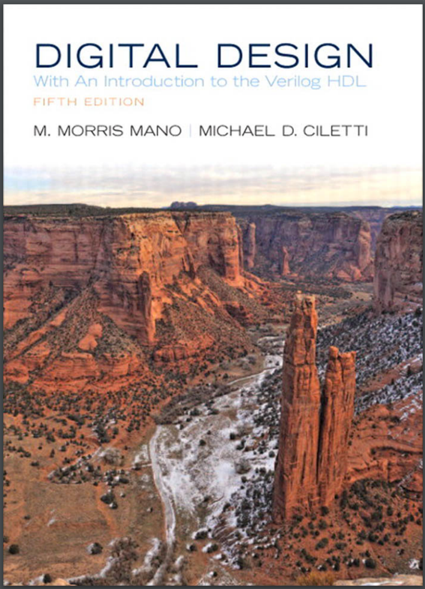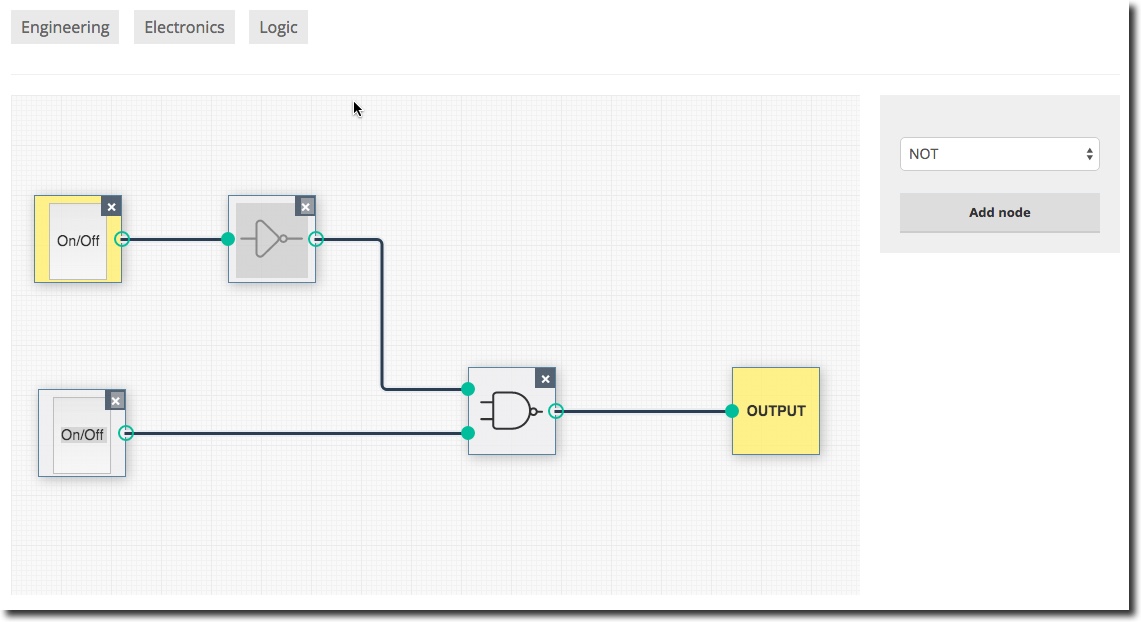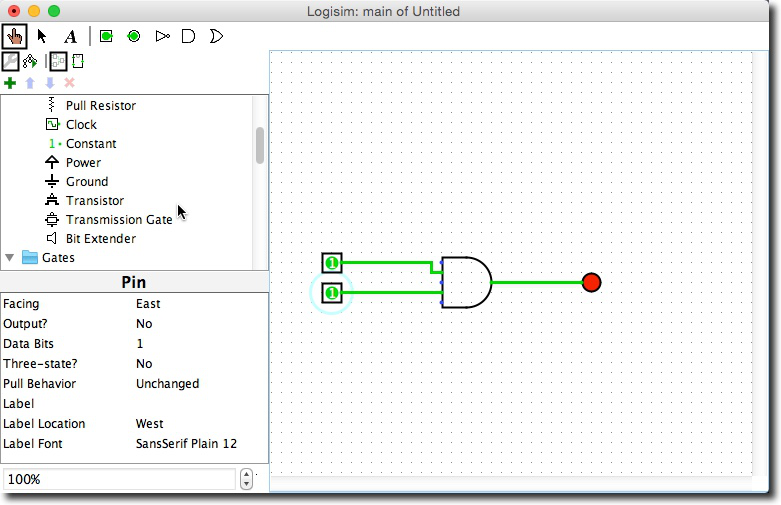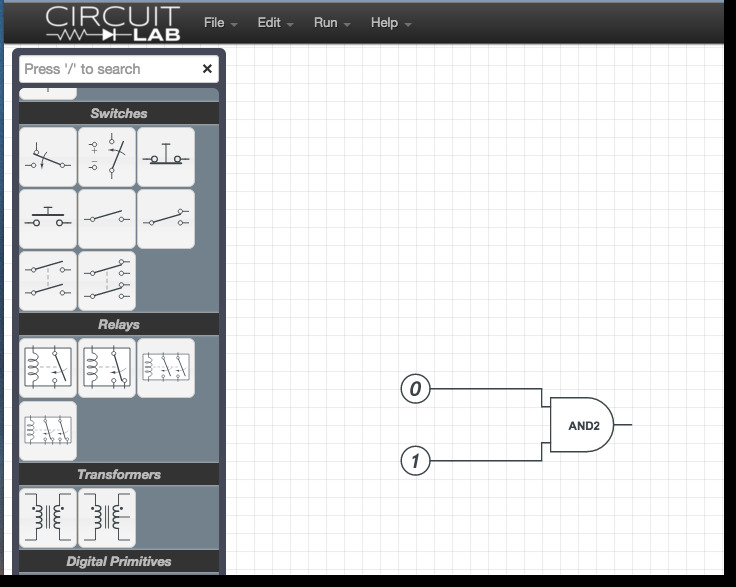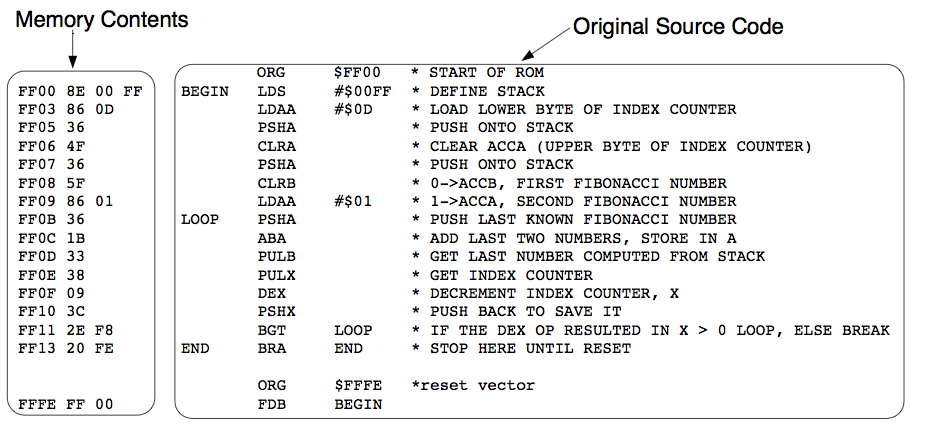CSC270 Weekly Schedule 2016
--D. Thiebaut (talk) 11:18, 26 August 2015 (EDT)
| Week 1 Jan 26, 27 |
| Topics: Introduction, Boolean Functions, First Lab. | Lab/Hw | Reading |
|
|
|
| Week 2 Feb 2, 4 |
| Topics: Maxterms, Nand, Nor, Karnaugh Maps, Decoders. | Lab/Hw | Reading |
|
|
| Week 3 Feb 9, 11 |
| Topics: Transistors, Java/Python simulation, Karnaugh Maps. | Lab/Hw | Reading | ||
|
|
| Week 4 Feb 16, 18 |
| Topics: Flipflops, oscilloscope | Lab/Hw | Reading |
|
|
|
| Week 5 Feb 23, 25 |
| Topics: Finite State Machines, Moore, Mealy, Python simulator | Lab/Hw | Reading |
|
|
|
| Week 6 Mar 1, 3 |
| Topics: JK Flipflop | Lab/Hw | Reading |
|
|
| Week 7 Mar 8, 10 |
| Topics: ROM-based sequencers | Lab/Hw | Reading |
|
|
|
Spring Break
| Week 8 Mar 22, 24 |
| Topics: Introduction to the 6811 Microprocessor. 6800 assembly. | Lab/Hw | Reading |
|
|
|
| Week 9 Mar 29, 31 |
| Topics: 6811 disassembly, Addressing modes, bus timing | Lab/Hw | Reading |
|
|
|
| Week 10 Apr 5, 7 |
| Topics: 6811 Input Port | Lab/Hw | Reading |
|
|
|
| Week 11 Apr 12, 14 |
| Topics: Memory-Mappe I/O, Input Port | Lab/Hw | Reading |
|
|
| Week 12 Apr 19, 21 |
| Topics: C & Arduino | Lab/Hw | Reading |
|
|
| Week 13 Apr. 26, 28 |
| Topics: TBA | Lab/Hw | Reading |
|
|
|
Resources & Misc. Information
Textbooks
- Mano, Digital Design, 5th Edition. Check the resource section on Moodle for more information.
Logic-Circuit Editors
- On-line editor: Academo
- App: LogiSim
Data Sheets
If you need to refer to the data sheets of various chips during the lab, you can click on any of the links below:
If the datasheets haven't been printed yet, print a set from these links: 74LS00
74LS01
74LS02
74LS03
74LS04
74LS05
74LS08
74LS09
74LS10
74LS12
74LS13
74LS15
74LS20
74LS21
74LS22
74LS26
74LS27
74LS28
74LS30
74LS32
74LS33
74LS37
74LS38
74LS40
74LS42
74LS47
74LS48
74LS51
74LS54
74LS55
74LS74
74LS75
74LS76
74LS83
74LS85
74LS86
74LS90
74LS9
74LS13
74HCT24
74LS24
74HCT24
74LS25
74HCT54.
6800 Lab Kit Reference Manual
6800 Microprocessor References
- The official Motorola 68HC11A8 Data Sheet. Fairly cryptic...
- A Motorola 6811 Manual. It is a nicely written refresher on many concepts of assembly language applied to the 6811.
- Check Section 3.2 on addressing modes (inherent, direct, extended, indexed, relative).
- Get a refresher for the different instruction types (arithmetic, shifts, control, etc) in Section 3.4.
- The condition code register is covered in Section 3.5. Skip Section 4.
- M68HC11 Technical Reference, from Motorola.
- Section 6.5 shows the instructions in logical groups.
- M68HC11 Pocket Reference.
- Very useful, on Page 15, a list of all the opcodes supported by the 6811, in numerical (hex) order.
- 68HC11A8 Technical Reference: a hardware & engineering description. of the 6811, its ports, and how it operates.
- See Section 10 for a cycle-by-cycle description of the execution of each instruction.
- See Appendix A, Figure A-14 for the timing diagram of a typical (multiplexed expansion) memory access.
- 6811 Instruction Set, with hexadecimal opcodes. A reverse map, from hex to instructions can be found here.
- 2-Page List of all the 6811 Instructions
- Software for the 6811
- Listing format
Lab Reports
- Excellent example: Lab 1
Programming Examples
- A Python program that generates a truth table.
Arduino References
- Online C Compiler: http://www.tutorialspoint.com/compile_c_online.php
- Online Kernighan and Ritchie's C Reference
